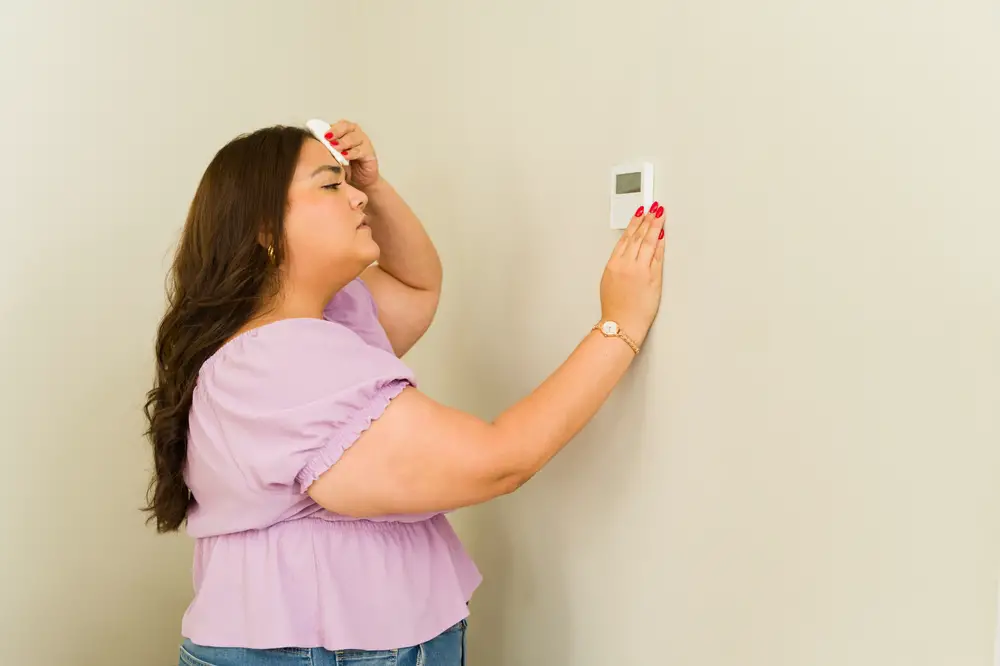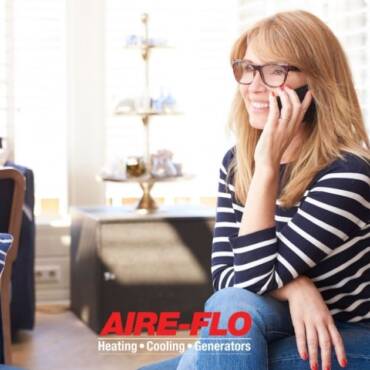There’s nothing more frustrating than expecting a burst of cold air from your air conditioning system, only to feel warm air blowing out instead. In the middle of Florida’s hot summer months, this isn’t just uncomfortable; it’s a problem that needs immediate attention. If you find your AC blowing warm air, it’s a sign that something in the system isn’t functioning properly.
At Downtown Air and Heat, we’ve seen just about every AC issue imaginable, and one of the most common calls we receive is from homeowners dealing with an air conditioner that blows warm air instead of cool air. Fortunately, most causes can be identified quickly and repaired by a qualified HVAC professional.
Common Reasons Why Your AC Might Be Blowing Warm Air
If your air conditioner is blowing warm air instead of cool air, it usually comes down to one of these culprits:
Poor Maintenance
An air conditioning system requires regular maintenance to function properly. When routine maintenance is skipped, critical components start to fail. Dirty air filters, clogged evaporator coils, and blocked condenser coils can all prevent the AC from effectively absorbing heat and cooling the indoor air.
A neglected system also struggles with proper airflow, which means warm indoor air gets circulated instead of refreshing cool air. Over time, this neglect shortens your AC’s lifespan and increases energy costs.
Refrigerant Leak
Refrigerant is the lifeblood of your AC; it absorbs heat from the indoor air and releases it outside. If the refrigerant levels are too low due to a leak, the system cannot cool the air properly. Instead, you’ll notice your air conditioner blowing warm air or even humid air throughout the home. Signs of a refrigerant leak include:
- Hissing or bubbling sounds near refrigerant lines
- Ice buildup on evaporator coils
- Decreased cooling performance
Since refrigerant is a high-pressure gas, only a professional HVAC technician should handle repairs and recharging.
Thermostat Issues
Sometimes the problem isn’t with your AC unit at all; it’s the thermostat. Incorrect thermostat settings, a malfunctioning thermostat, or faulty electrical components within the device can cause the system to blow warm air.
For example, if the thermostat is set to “fan” instead of “cool,” the system will blow air without engaging the cooling cycle, leading to warm air blowing instead of cold air.
Electrical Problems
Your AC depends on a series of electrical components, from motors to circuit breakers, to function properly. A tripped breaker, faulty motor, or damaged wiring can interrupt the cooling cycle, leaving your home filled with warm indoor air.
Electrical problems not only stop your AC from functioning correctly but can also be dangerous. If you suspect electrical issues, call a professional HVAC technician immediately.
How to Diagnose and Fix AC Warm Air Issues
While some causes of an air conditioner blowing warm air require professional attention, there are a few things you can check yourself before making a service call.
Step 1: Check Thermostat Settings
First, make sure your thermostat is set correctly. Confirm it’s on “cool” mode, set to your desired temperature, and functioning properly. A malfunctioning thermostat may need recalibration or replacement. Sometimes, the fix is as simple as replacing old batteries or ensuring the thermostat isn’t placed near heat sources, which can cause it to read the air temperature incorrectly. Taking a few minutes to double-check these details can save you from unnecessary stress and service calls.
Step 2: Inspect Air Filters
A dirty or clogged air filter can block airflow, making it impossible for your system to push cold air into your home. Replacing air filters regularly is one of the simplest ways to ensure proper airflow and indoor air quality. If you notice your air conditioner blowing warm instead of cool air, check the filter first. A clean filter not only keeps your AC running efficiently but also helps trap dust, pollen, and other particles that affect indoor air quality. Ignoring this small step can quickly lead to frozen evaporator coils, higher energy bills, and even damage to your cooling system.
Step 3: Examine the Outdoor Unit
The outdoor AC unit plays a critical role in releasing heat from your home. If the condenser coils are covered in dirt, debris, or leaves, the system won’t be able to expel heat effectively. Clean around the unit, remove any obstructions, and check for signs of ice buildup on the evaporator coils. It’s also smart to ensure there’s at least two feet of clear space around the outdoor AC unit, allowing it to pull in sufficient outdoor air to function properly. If the coils appear damaged or heavily caked with grime, it’s best to call a professional HVAC technician for a deep cleaning and inspection.
Step 4: Consult Professional Help
If you’ve checked your thermostat, air filter, and outdoor unit but still feel warm air blowing from your vents, it’s time to call in the experts. Professional HVAC technicians can inspect refrigerant levels, electrical components, and other critical parts of the cooling system that homeowners may not be able to address on their own safely. They also have the right tools to detect hidden issues, such as refrigerant leaks or faulty motors, before they cause lasting damage. Calling in a qualified HVAC professional not only restores cool air faster but also helps protect your AC’s performance and lifespan.
Preventive Tips for Efficient AC Function
Instead of waiting for your air conditioner to break down, staying proactive with maintenance can save you from costly repairs and the discomfort of hot air. Here’s how to keep your AC’s performance in top shape:
Regular Maintenance Checks
Schedule seasonal AC tune-ups to catch small issues before they become big problems. Professional inspections ensure that all electrical components, refrigerant lines, and critical system parts are functioning properly. These visits also give technicians a chance to clean and adjust components that may be quietly reducing your AC’s performance. By keeping up with regular maintenance, you can extend your AC’s lifespan and avoid the frustration of unexpected breakdowns during the hottest months.
Cleaning and Replacing Filters
Dirty air filters are one of the most common reasons why an AC is blowing warm air. Replace or clean your filters regularly, usually every one to three months, depending on usage and your specific indoor air quality needs. A clogged air filter not only restricts airflow but also forces the system to work harder, which can raise energy costs and lead to premature wear on critical components. Staying consistent with filter changes is a simple step that pays off in both comfort and lower utility bills.
Scheduled Professional Inspections
Annual or bi-annual inspections by a qualified HVAC professional help extend your AC’s lifespan, reduce energy costs, and maintain proper airflow throughout your home. During these visits, technicians can identify worn parts, test electrical components, and verify refrigerant levels to ensure they are where they should be, preventing more significant issues. Regular checkups also provide reassurance that your cooling system is functioning correctly when you need it most.
By combining these habits, you’ll enjoy consistent cold air, lower utility bills, and peace of mind during the hottest months of the year.
How Downtown Air and Heat Can Help
At Downtown Air and Heat, we understand how frustrating it is to deal with an air conditioner blowing warm air in the middle of a Florida summer. That’s why we offer a comprehensive suite of HVAC services, designed to restore comfort quickly and effectively.
AC Maintenance Plans
Our maintenance plans are designed to keep your cooling system running at optimal efficiency throughout the year. From cleaning dirty evaporator coils to checking refrigerant levels and ensuring proper airflow, we handle the details so you don’t have to worry about a broken AC.
Repair and Replacement Services
Whether it’s a clogged air filter, faulty motor, or refrigerant leak, our experienced HVAC technicians can diagnose and repair the issue quickly. If your system is beyond repair, we also offer energy-efficient replacement options tailored to your home’s needs.
Energy Efficiency Consultation
An AC that’s blowing warm air may also be costing you more money on utility bills. Our team can assess your current system and provide recommendations to boost energy efficiency, lower costs, and enhance indoor air quality.
Emergency Repair Services
We know AC problems don’t always happen during business hours. That’s why we offer emergency repair services, so you’re never left sweating through the night with warm air blowing into your home.
Say Goodbye to Warm Air Woes
If your air conditioner is blowing hot air instead of cool air, don’t ignore the warning signs. From refrigerant leaks to dirty air filters and malfunctioning thermostats, there are several reasons why your AC may not be functioning properly.
Most issues can be fixed with professional attention, and even better, many can be prevented with regular maintenance.
Downtown Air and Heat is committed to keeping your AC system running smoothly, your indoor air cool and comfortable, and your energy costs under control. If you’re tired of dealing with warm air woes, contact us today to schedule an inspection or maintenance service.
Whether you require installation, repair, or maintenance, our technicians will assist you with top-quality service at any time of the day or night. Take comfort in knowing your indoor air quality is the best it can be with MOE heating & cooling services Ontario's solution for heating, air conditioning, and ventilation that’s cooler than the rest.
Contact us to schedule a visit. Our qualified team of technicians, are always ready to help you and guide you for heating and cooling issues. Weather you want to replace an old furnace or install a brand new air conditioner, we are here to help you. Our main office is at Kitchener but we can service most of Ontario's cities
Source link



